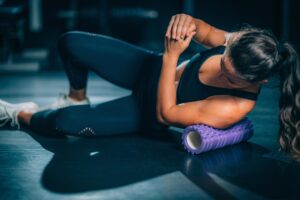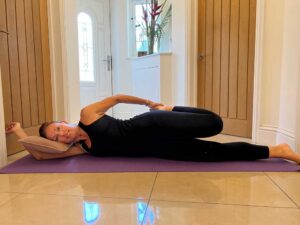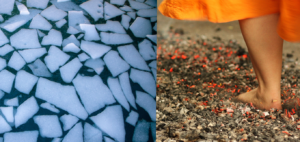With covid restrictions easing and the travel industry opening up, many people are thinking about heading for the ski slopes for a much-needed change of scenery and fun-filled exercise! Skiing is a great form of exercise, but many are ill- prepared for the physical demands on the body and the associated risks to injury.
5 Most Common Skiing Injuries
Anterior Cruciate Ligament (ACL) tear or rupture
Your Anterior Cruciate Ligament (ACL) is one of the most at-risk areas of the body for tears while skiing. It runs diagonally through the inside of the knee, providing rotary stability. It also controls how far the tibia (shin bone) moves in relation to the femur (thigh bone). ACL injuries occur in skiing when people twist their knee while standing, hyperextend their knees, or stop suddenly. Often there is an audible ‘pop’ sound and immediate swelling within the first 4 hours of injury. Physiotherapy is needed to restore your ACL to its proper function. Sometimes surgery is indicated if there is a partial or complete tear of the ligament and you are unable to return to the sport that you enjoy.
Medial Collateral Ligament (MCL) Strain/Tear
The MCL is found on the inside of the knee and stops the knee from bending fully inwards. An injury may happen in skiing from the force of one leg falling on another twisting the knee inwards. Pain, bruising and swelling can occur. It is important to ice the injury, elevate the leg and seek medical attention for pain management. With a grade II or III strain, surgery may be needed with post operative physiotherapy for pain relief, to regain full range of motion and to restore function.
Skier’s Thumb
Skier’s thumb occurs when a skier falls with a pole in their hand, the pole can catch on the ground and bend the thumb too far outward. This can sprain the ulnar collateral ligament of the thumb which is important for pinch and grip activities. Physiotherapy is beneficial to accelerate healing and optimise recovery. For more severe tears, surgery is indicated to restore stability and function with post-operative Physiotherapy.
Wrist Fractures
With skiing, it is instinctive to land on an outstretched hand to break your fall, putting your entire body weight on your wrist, damaging the ligaments or breaking the wrist bones. Depending on the extent of the injury, you may only need a splint or cast to immobilise the wrist joint and allow healing. In more severe injuries, surgery is required and follow up Physiotherapy to restore wrist movement and hand function.
Shoulder Injuries
Depending on the way that you fall, shoulder injuries are common as well resulting in significant pain and functional disability. There are plenty of structures that may be affected – most commonly, rotator cuff tendons, ligaments, bursae, the acromioclavicular joint, clavicle (collar bone), shoulder capsule and the shoulder joint itself.
With these injuries in mind, it is important to get ski fit to avoid this happening to you.
5 Exercises to get you ski fit
Here are a couple of easy exercises that you can do to strengthen your body. Your focus should be on your quads, glutes and calves, but a strong core is also essential to help with stability and balance.
Wall Squat
Wall squats are a brilliant way to build strength and endurance in your thighs (quads) which will help to prevent the burning sensation in your legs on long, tough ski runs.
- Stand with your back supported against the wall
- Bend your knees until your thighs are parallel to the floor and push up through your feet, squeezing your glutes as you return into standing
- 20 reps. 60 second rest. Repeat 3-4 times
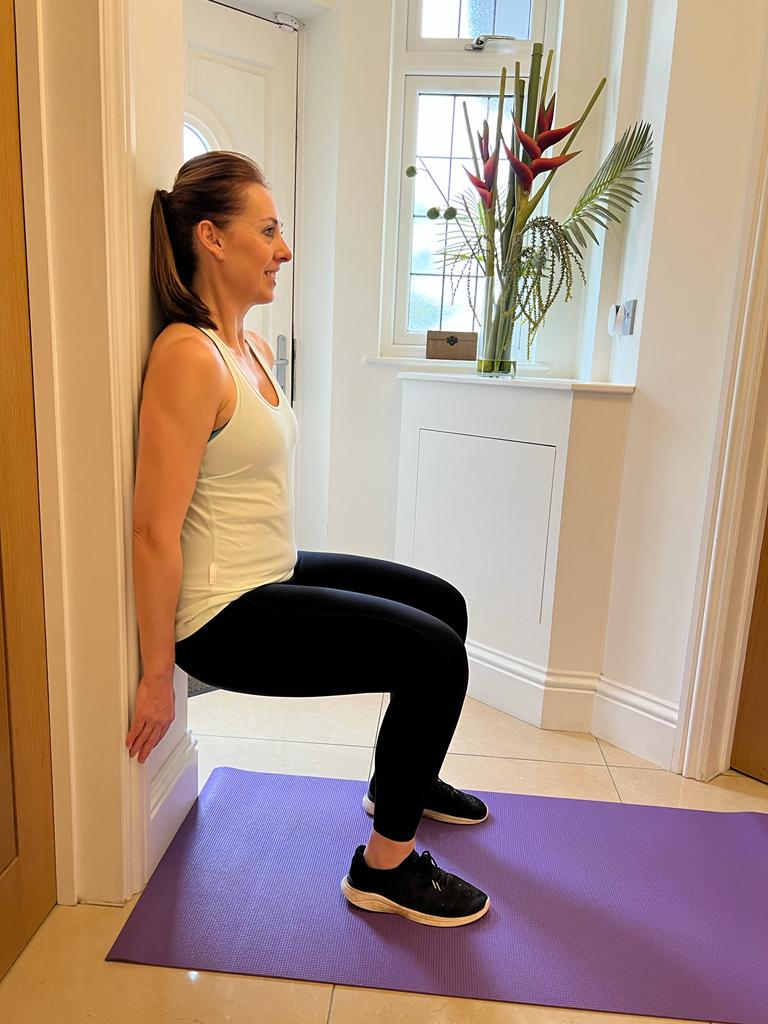
Top tip: Make this harder by holding a dumbbell weight in each hand
Squat Jump
Squat jumps will help to develop explosiveness in your quads and glutes which is beneficial when turning on the slopes.
- Start with your feet shoulder-width apart
- Squat down so your thighs are parallel to the floor, then jump high in the air
- 10 reps. 30 second rest. Repeat 3-4 times
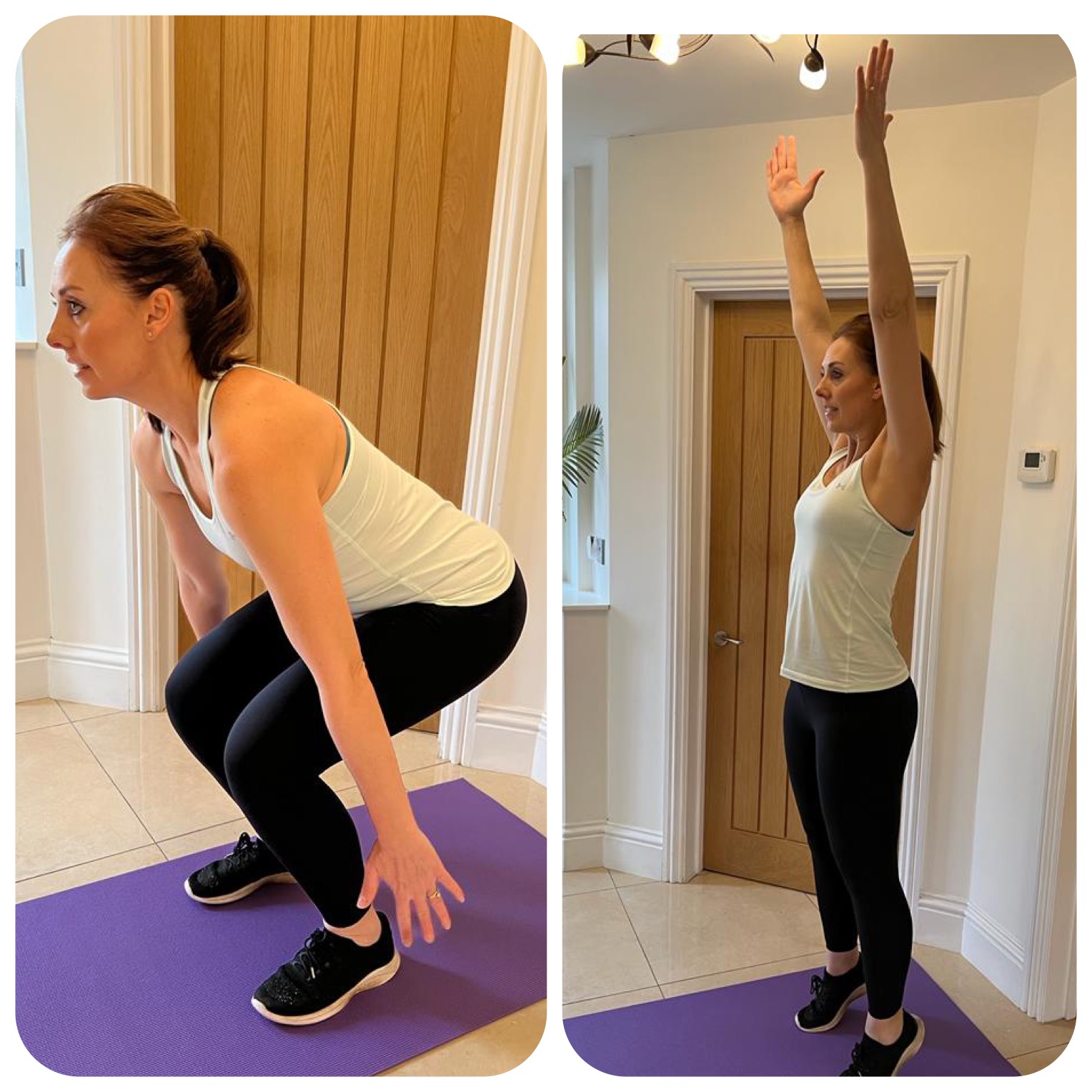
Lunge With Calf Raises
Lunges are great for strength and balance.
- Stand with one foot in front of the other, hip width apart and both feet pointing forwards
- Bend the knees to drop the back knee towards the floor and allow the back heel to lift
- Hold this position and lift the front heel off the floor
- 10 reps of front heel lifts. 30 second rest. Repeat 3 – 4 times on each leg
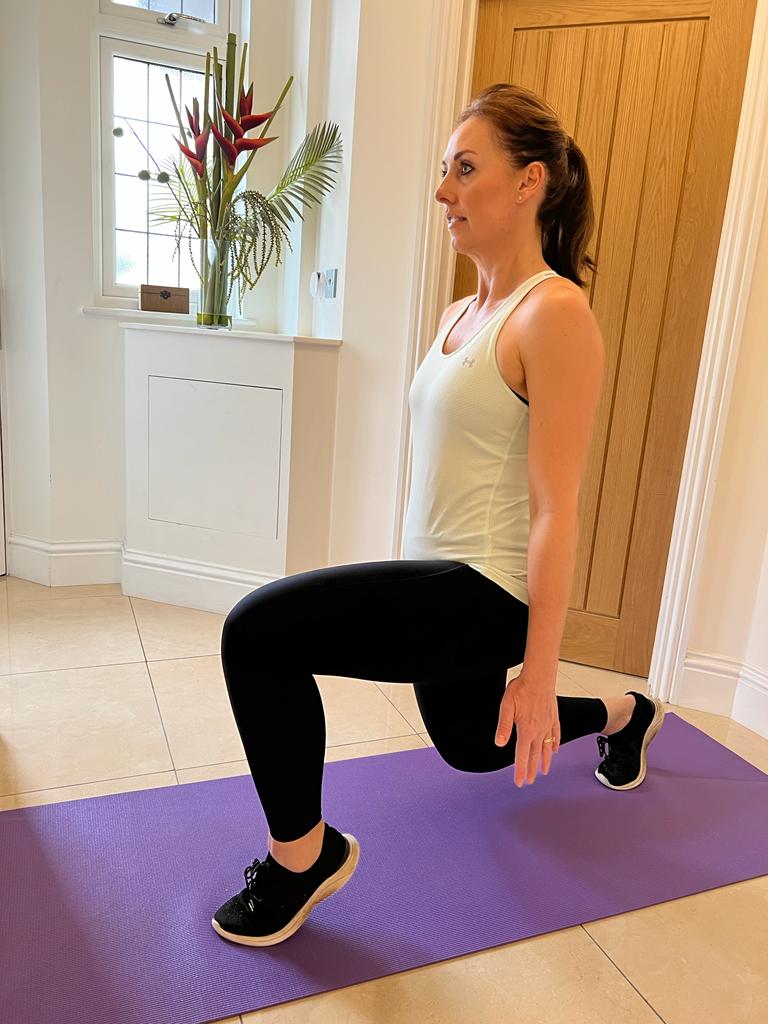
Top tip: Keep your upper body straight with your core muscles engaged throughout and make this harder by holding a dumbbell weight in each hand
Forearm Plank
Strong core muscles around your lower back and abs are advantageous when skiing, especially when turning or taking on more challenging terrain.
- Lie flat on the floor
- Place your elbows and forearms directly underneath your shoulders, push your hips up and rest only on your forearms and toes so that your body forms a straight line
- Hold the position for 20 to 30 seconds, building up to 1 minute or longer
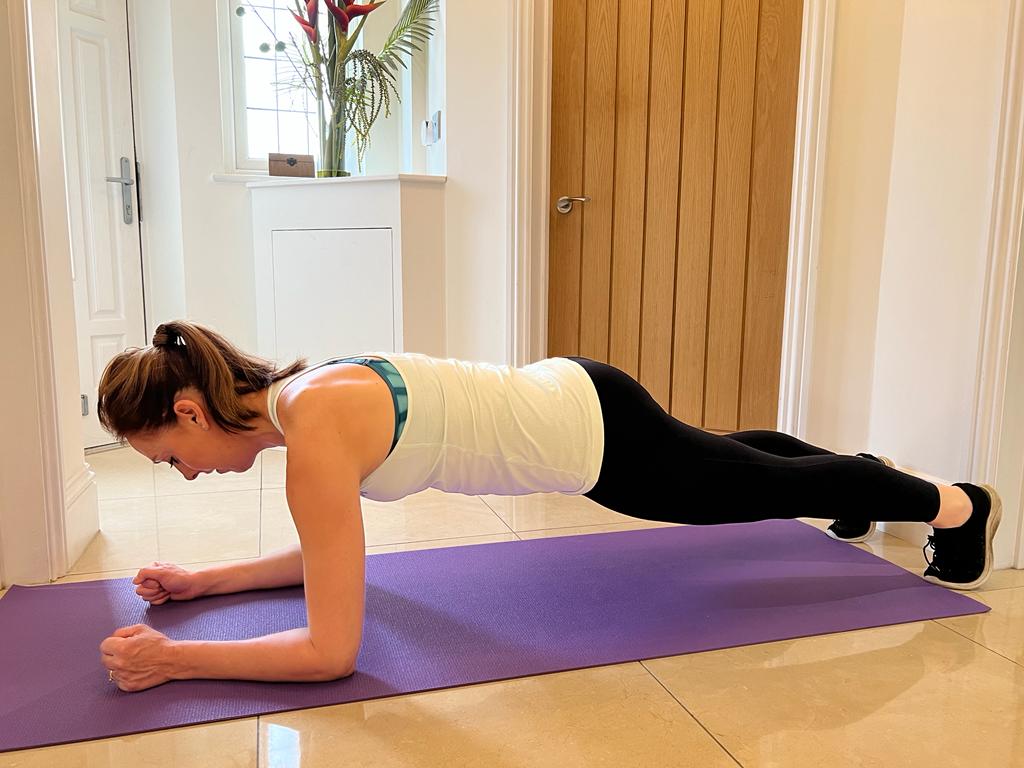
Try these plank variations for a harder workout:
Forearm To Full Plank
- Start in the forearm plank position
- Move and straighten one arm at a time to lift yourself into the full plank position.
- Move back down into the forearm plank
- Aim for 30 seconds for 1 set, building up to 3 sets
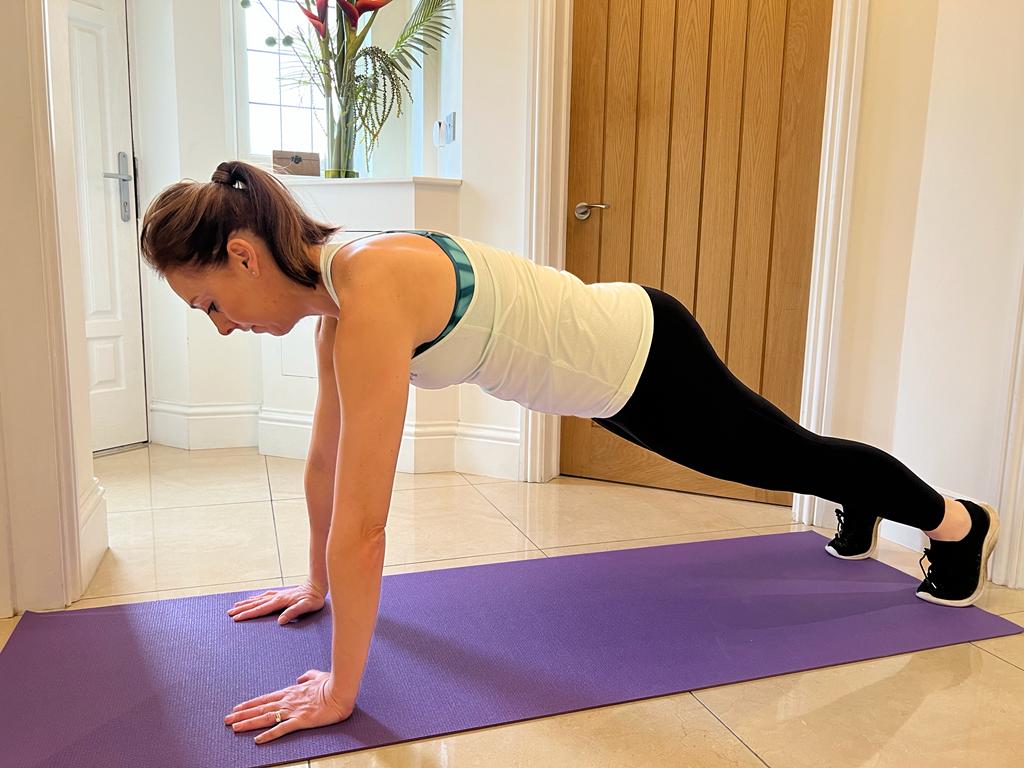
Top tip: Minimise swaying of your hips as you alternate positions.
Spiderman Plank (knee to elbow)
- Start in the forearm plank position
- Pull the knee toward the outside of your elbow and then return to the start position. Repeat with the other knee.
- Aim for 5 to 10 reps on each side.
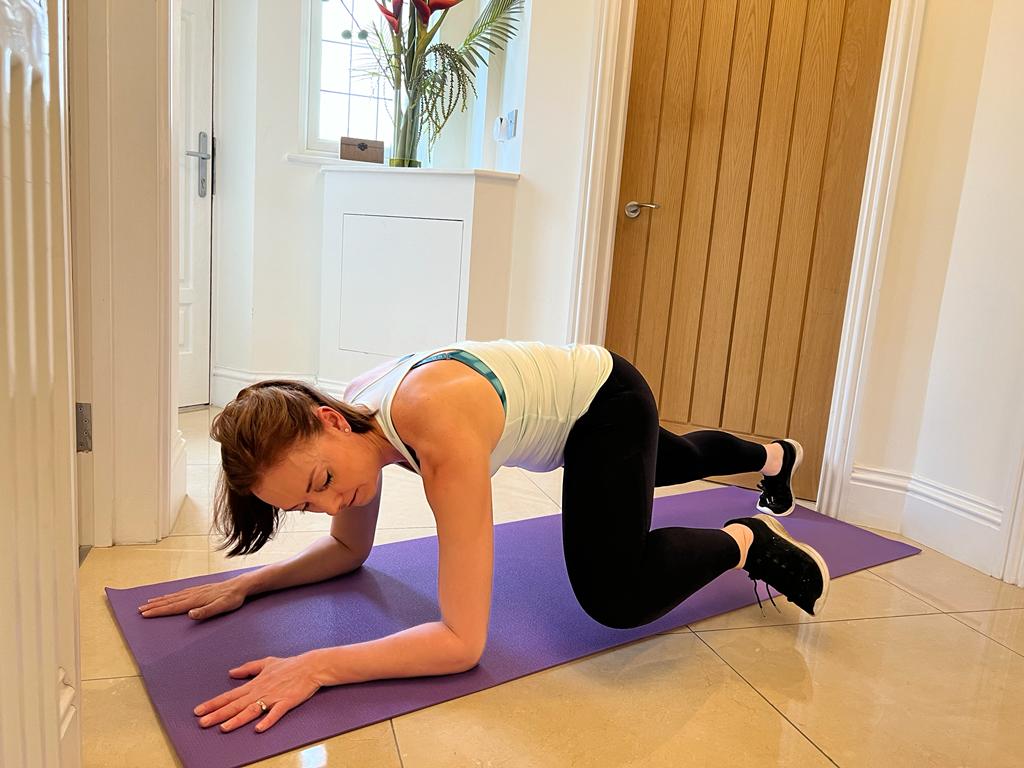
Top tip: Make sure that the inner thigh hovers over the floor as you move your leg.
Plank Jacks
- Start in the forearm plank position
- Jump both feet outward, wider than hip-distance apart
- Immediately jump them back into the start position
- Aim for 30 seconds for 3 sets; gradually build to 60 seconds
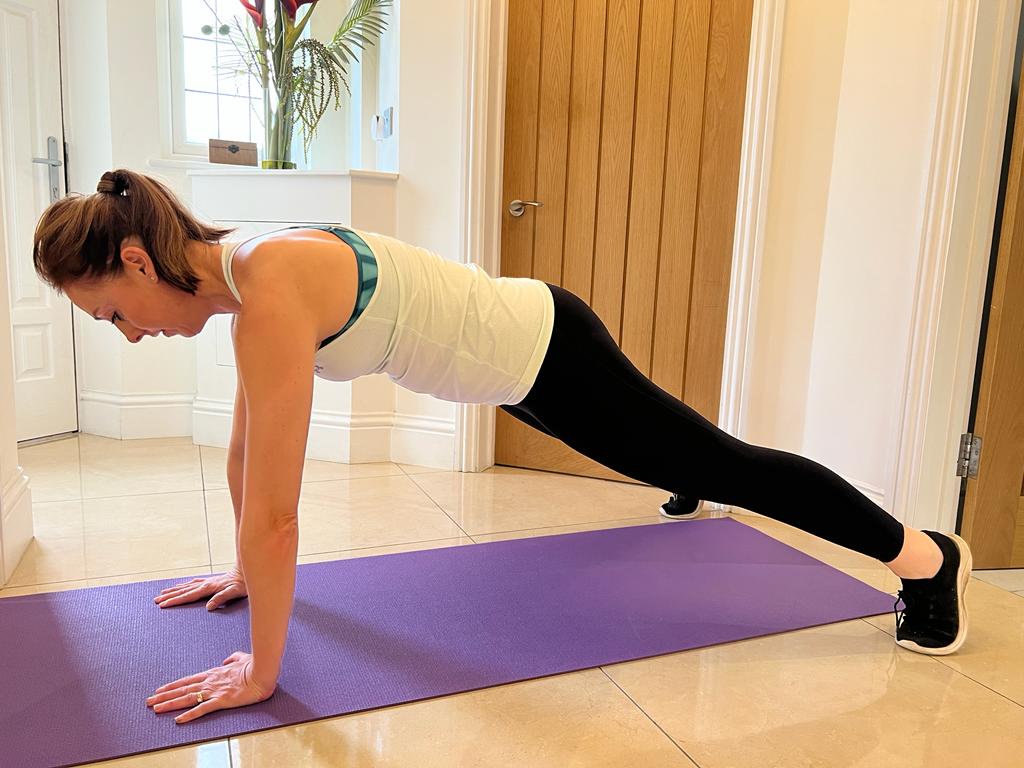
Plank With Shoulder Taps
- Start in a full plank with hands directly under your shoulders
- Lift one arm and bending your elbow, cross your hand to your opposite shoulder
- Repeat, alternating with the other side
- Aim for 30 seconds for 1 set, building up to 3 sets
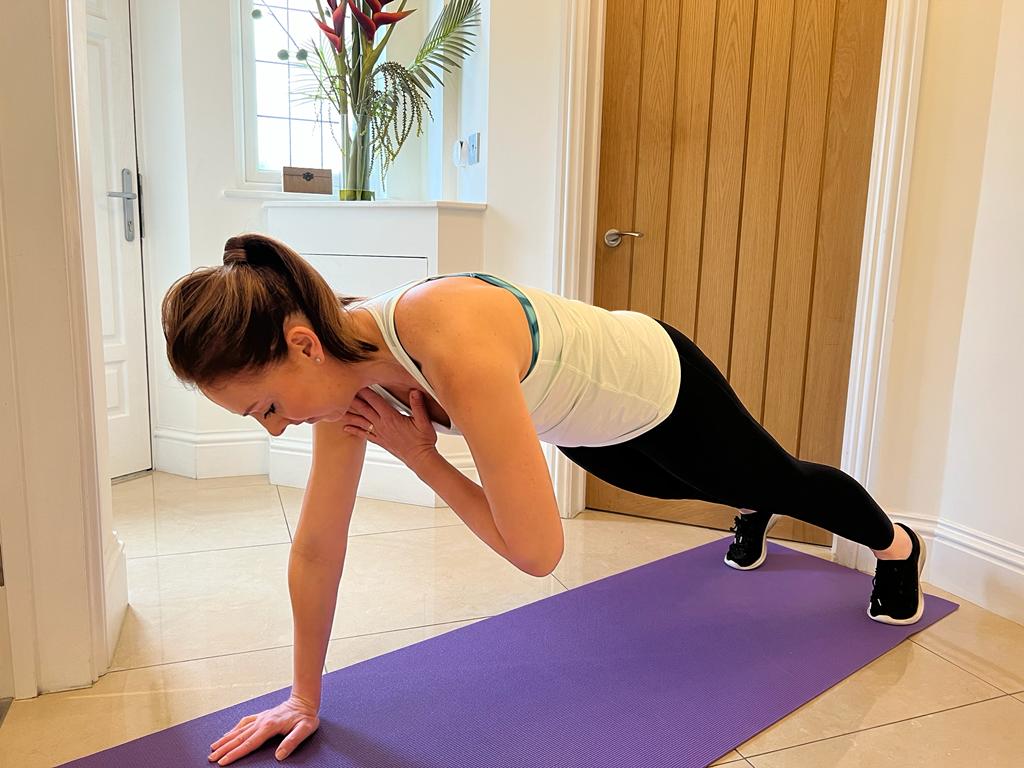
If you think you might benefit from some exercise advice to get you ski fit or you have a niggling injury that needs fixing before you hit the slopes, contact ‘Marie Daniels Physiotherapy’ for some physiotherapy/rehabilitation on 07920112209 or [email protected]
If you have enjoyed this article, please feel free to share it on your favourite social media platform.


